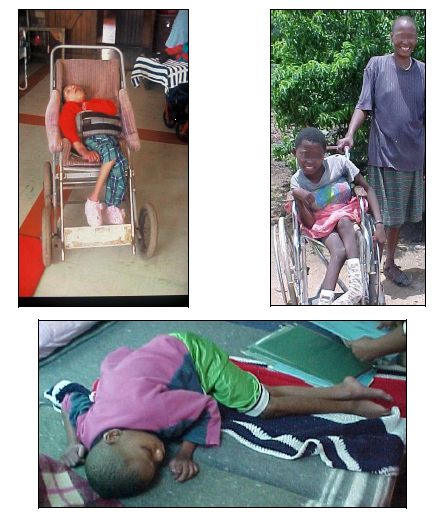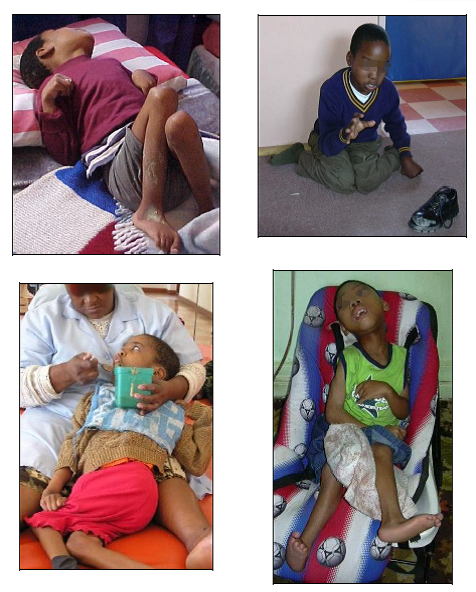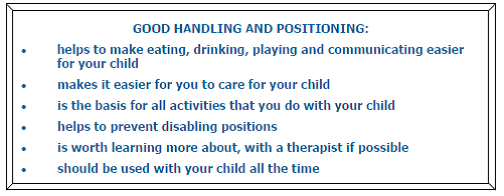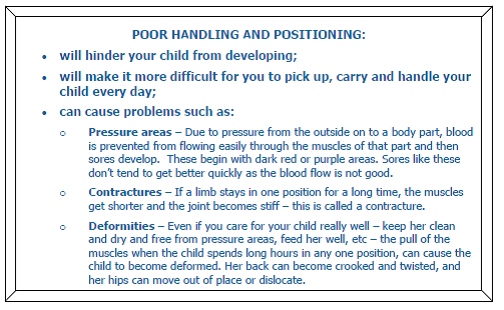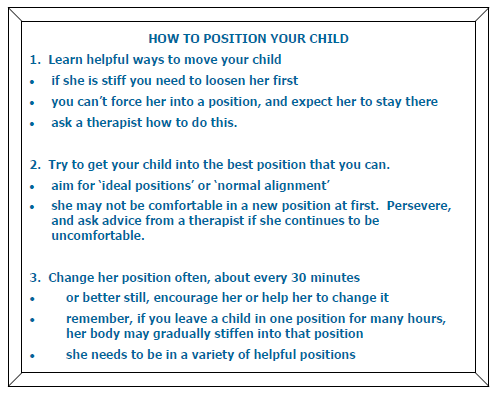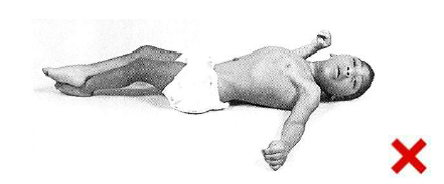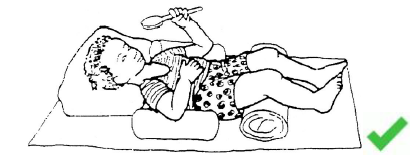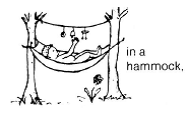Module 3: Positioning Your Child
Page Outcomes[edit | edit source]
When you have finished this page, you should be:
- More confident to position a child with cerebral palsy,
- Be able to show others better ways to position a child with cerebral palsy
Positioning and Handling[edit | edit source]
Here are some photos of poor positioning and handing of children with cerebral palsy
Good Handling and Positioning[edit | edit source]
Here are some of the benefits of good handling and positioning skills:
Now lets look at the problems with poor handling and positioning techniques:
And as children with disabilities gain access to wheelchairs, they very often spend long hours poorly positioned in the wheelchair, and still unable to move themselves. And they still develop a crooked back and other disabling deformities, including eventually breathing difficulties due to the chest space being so crooked and confined. You can see this in some of the pictures above
Now let‟s look at positioning a child, and what you can do to improve her position.
In the next section we will be looking at specific positions, both those that are 'poor' positions, and suggestions for „helpful‟ positions. For each position, we will use this checklist (see diagram below) to help us decide in an ordered way whether the child is in a poor or helpful position.
Lying[edit | edit source]
Supine (on their back)
This is a poor position because:
|
This is a good position because:
|
Supine Check list:
Head and body
- If she can move her head on her own, make sure it is comfortable
- If she cannot move her head on her own, make sure it is in the middle and comfortable
- Her body (spine) must be straight – support on her sides if needed with a rolled up towel to keep her straight
Legs and feet
- Bend her hips – this helps to release tension in her lower back which is often arched, and it
- helps to relax stiffness in her legs. Place support under her knees to keep hips bent (not under her feet)
- Keep her legs open and uncrossed – use a pillow between if needed
- Feet should be as close to a standing position as possible – if her feet push down, talk to a therapist about the need for an ankle/foot orthosis
Shoulders and arms
- They should be forward and supported, especially if her arms pull back. This position also helps to relax her upper back, and allows her hands to open more easily.
- Lying in a hammock can help to relax tight muscles.
- Babies/small children can „hang‟ in a large towel (held by two adults) to relax tight muscles.
